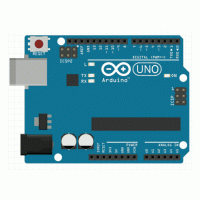The featured image of this blog post is by PublicDomainPictures from Pixabay.
Recently, I bought some ATmega328P-PU (DIP packages) chips in China and was concerned that they might be counterfeit, given that three years ago some ATmega328P clones, which did not support nano-power, had been found on Pro Mini boards. The first check looked as if they were fake chips, but apparently, they were the real thing. but they seem to work fine.
Since my stock of ATmega328P DIP chips had been depleted, I decided to buy a few new ones. Looking around, I noticed that the prices have gone up by a factor of three, though. So, why not order at AliExpress, where you could get them for the pre-Covid price?
After placing the order, I had some second thoughts and looked on the web for reports on counterfeit ATmega328 chips. Indeed, Kevin Darrah had found some very strange counterfeit chips on Pro Mini boards. They act as if they are the real ones, but when it comes to deep-sleep current consumption, they consume around 100 µA instead of 100 nA. In addition, high-voltage programming was not working. By taking the chip apart and analyzing the die, it became apparent that the die was not manufactured by Atmel. As a fast check, Kevin proposed to look at the ROM area after the chip signature and provided a sketch for testing that. It was reported that the fake chips usually had an output as the one below, with a lot of FFs:
boot sig dump 1E B8 95 FF F FF FF 26 FF FF FF FF FF FF 5D FF FF FF FF 0 FF FF FF FF FF FF FF FF FF FF FF FF
When you run the sketch on real ATmegas, there are only very few FFs in this area. So, the first thing I did when the chips arrived was to run this sketch on them. And I got very similar results to the one above:
boot sig dump 1E D4 95 FF F FF FF 26 FF FF FF FF FF FF 58 FF DF FF DF FF FF FF FF FF FF FF FF FF FF FF FF FF
Well, testing the chips with deep-sleep mode, programming them in high-voltage mode, and even trying debugWire on them, did not show any deviation from the expected behavior. So, I guess, looking into the ROM area for a lot of FFs is not enough to decide whether it is a fake chip or not. In any case, I am relieved that the chips I bought are most probably the real thing and that I can use them in low-power projects. However, as pointed out by Ted in the comment section, based on the specification of what data is stored in the area after the signature bytes, it is still very unlikely that the chips are genuine Microchip MCUs. And so other surprises may lurk around the corner, e.g., reduced flash endurance.
EDIT: Changed the conclusion after Ted’s comment.


April 15, 2023 — 12:37
Genuine Atmel ATmega328P chips will include manufacturing details such as lot and wafer numbers in the signature block as specified here:
https://microchip.my.site.com/s/article/Serial-number-in-AVR—Mega-Tiny-devices
Presumably this is for traceability and quality control – which, of course, counterfeiters have no reason to include. The latter cater to the hobby electronics market – not industry. Genuine ATmega328P (particularly SMD) have been unavailable to purchase for the better part of a year due to the world-wide chip shortage. Mouser and DigiKey are quoting two or more months before they get stock. If China still has genuine ATmega328P chips it’s likely old stock, very pricey and reserved for important clients.
April 15, 2023 — 13:47
Hi Ted,
thanks for the pointer! So, the chips are most probably not genuine. However, they appear to be much closer to the original than the clones Kevin Darrah found.